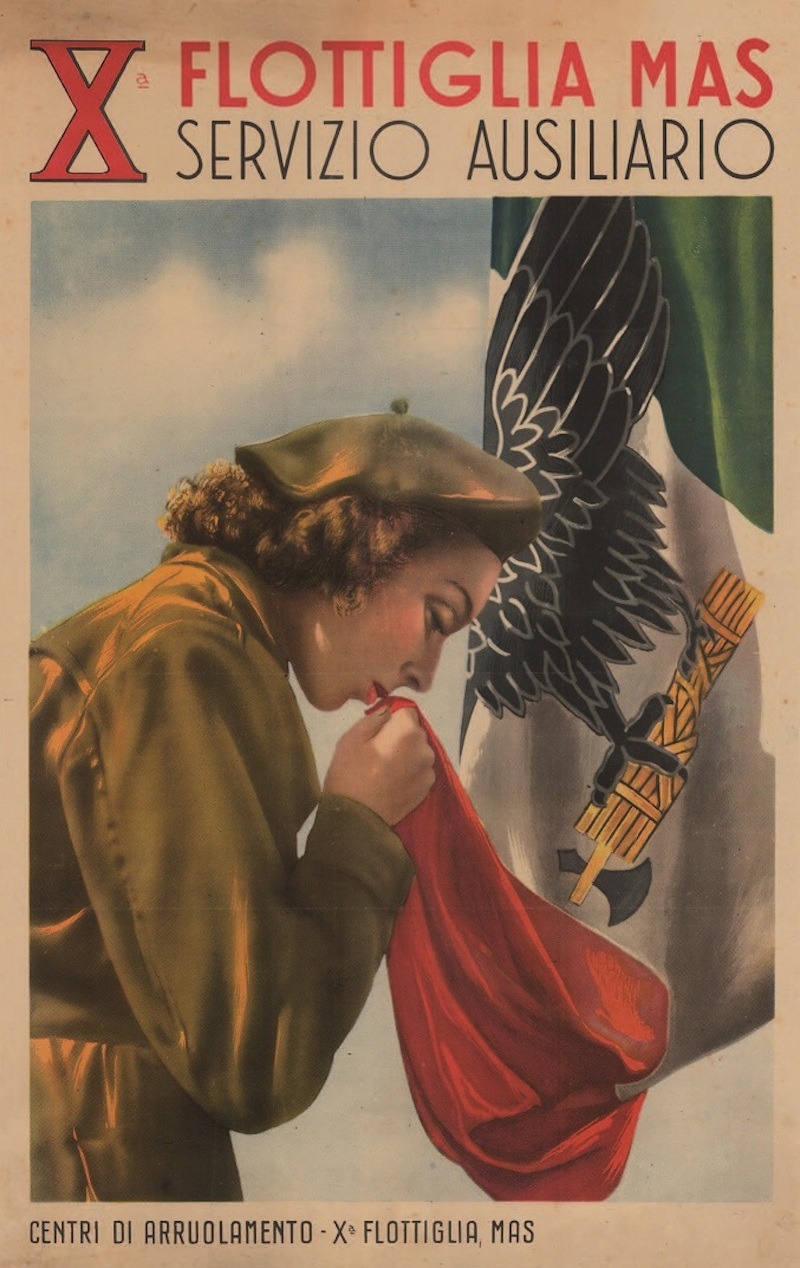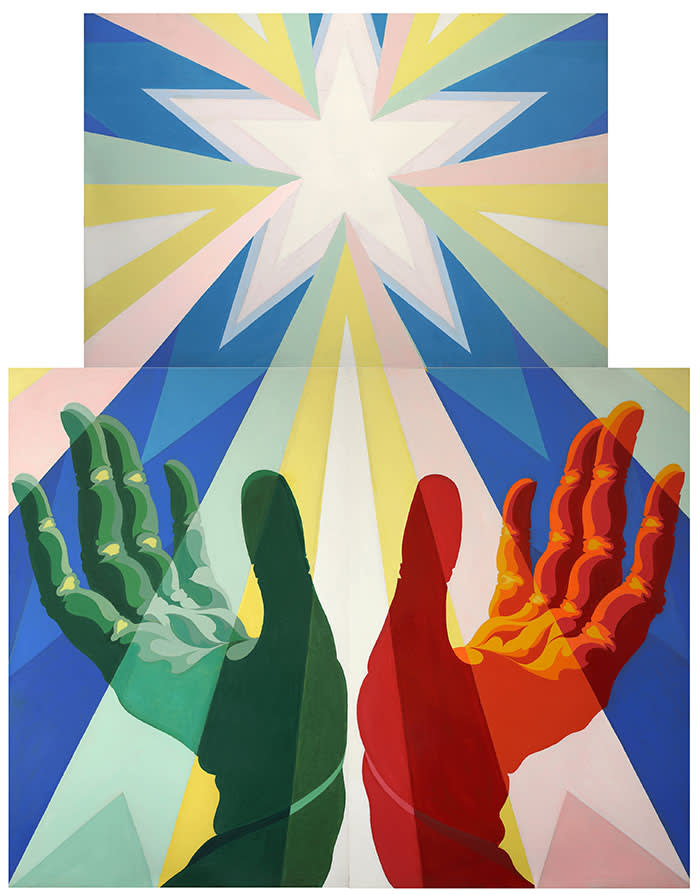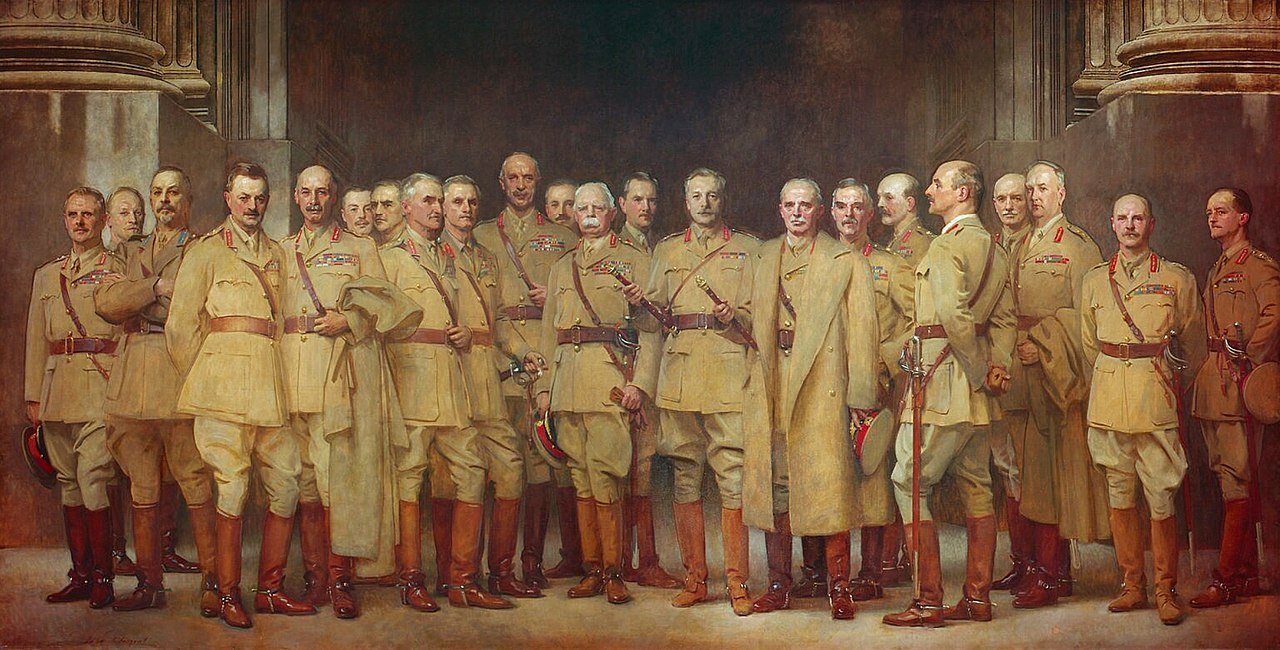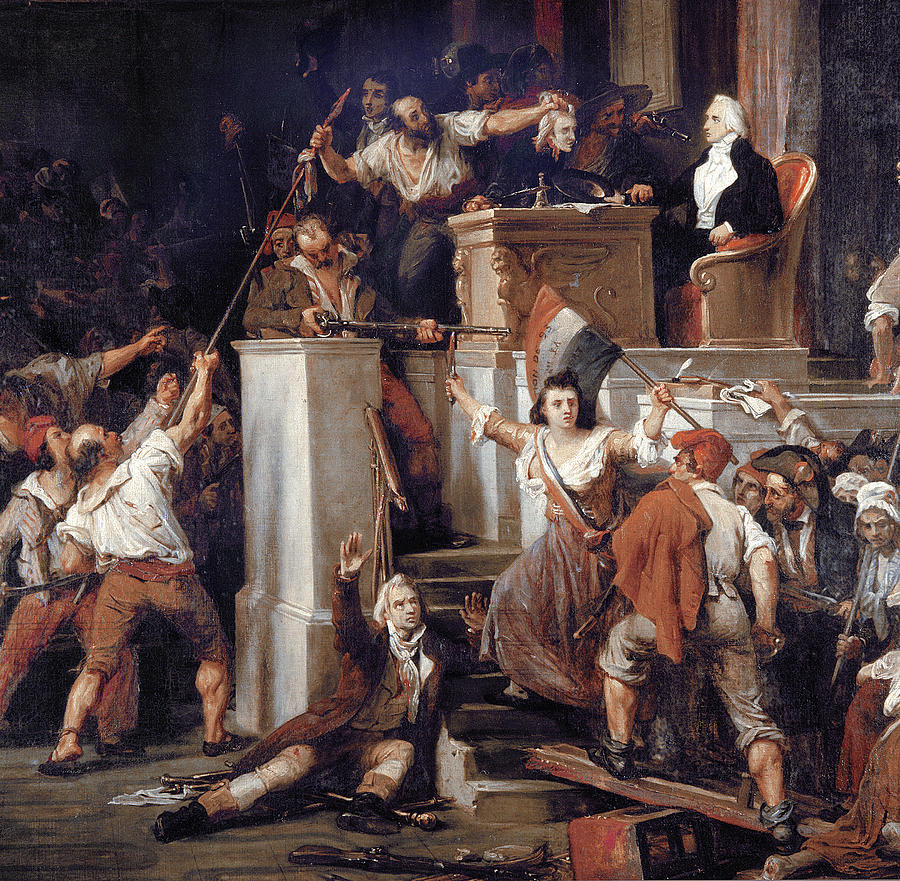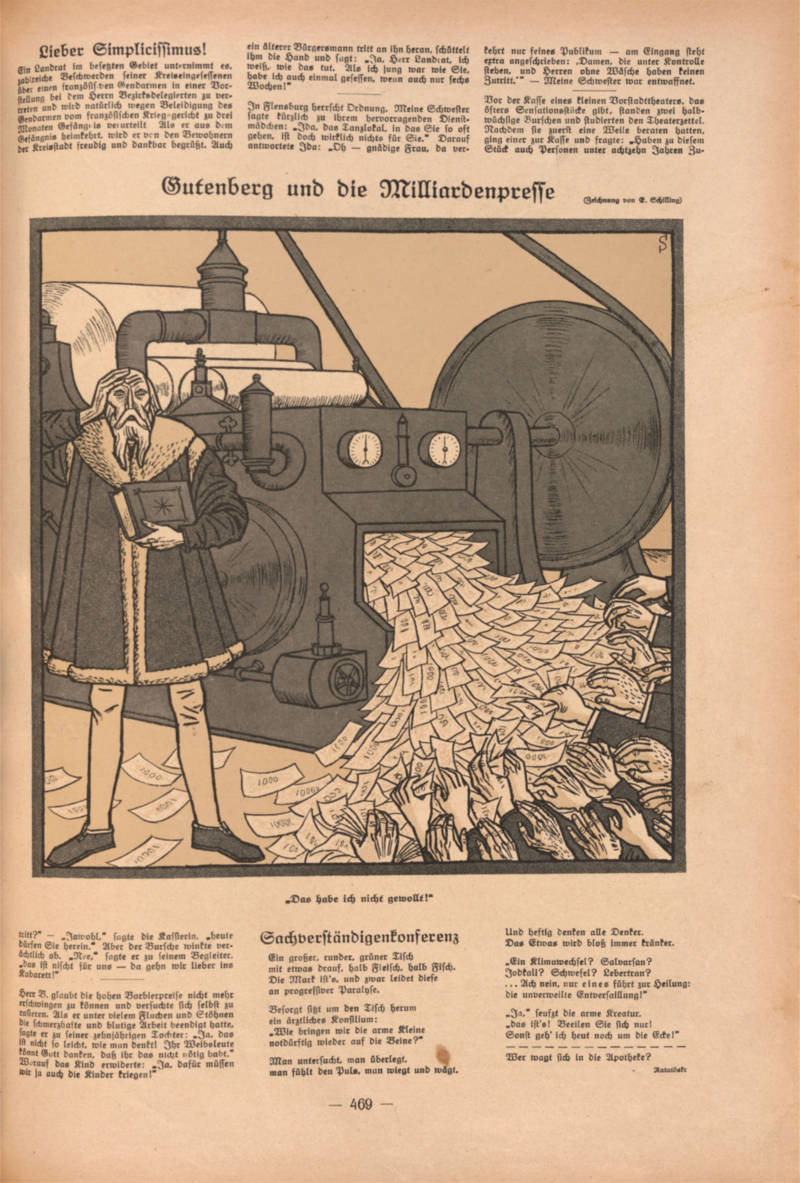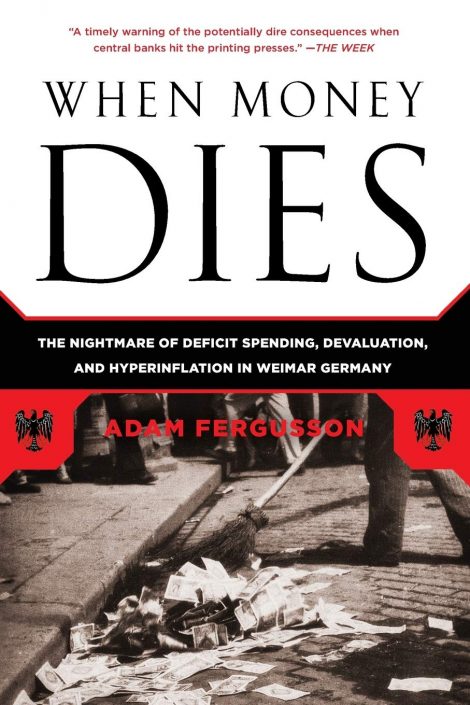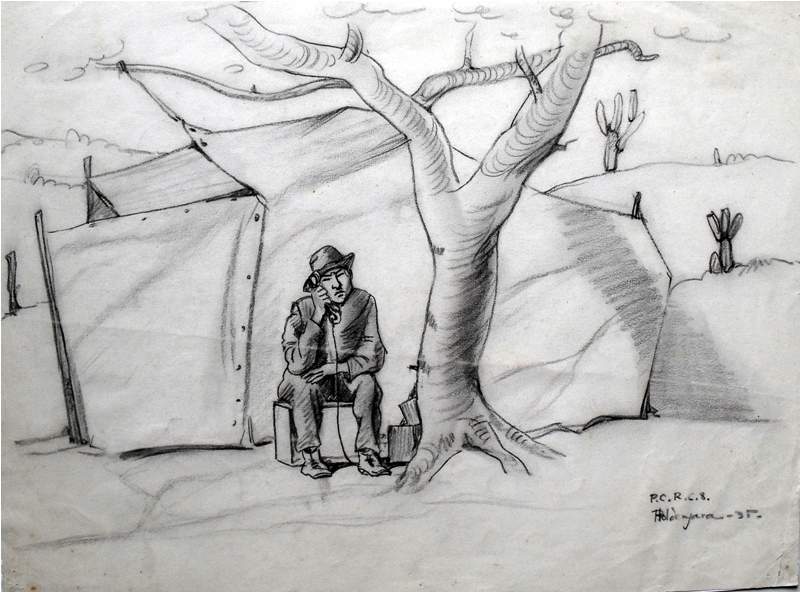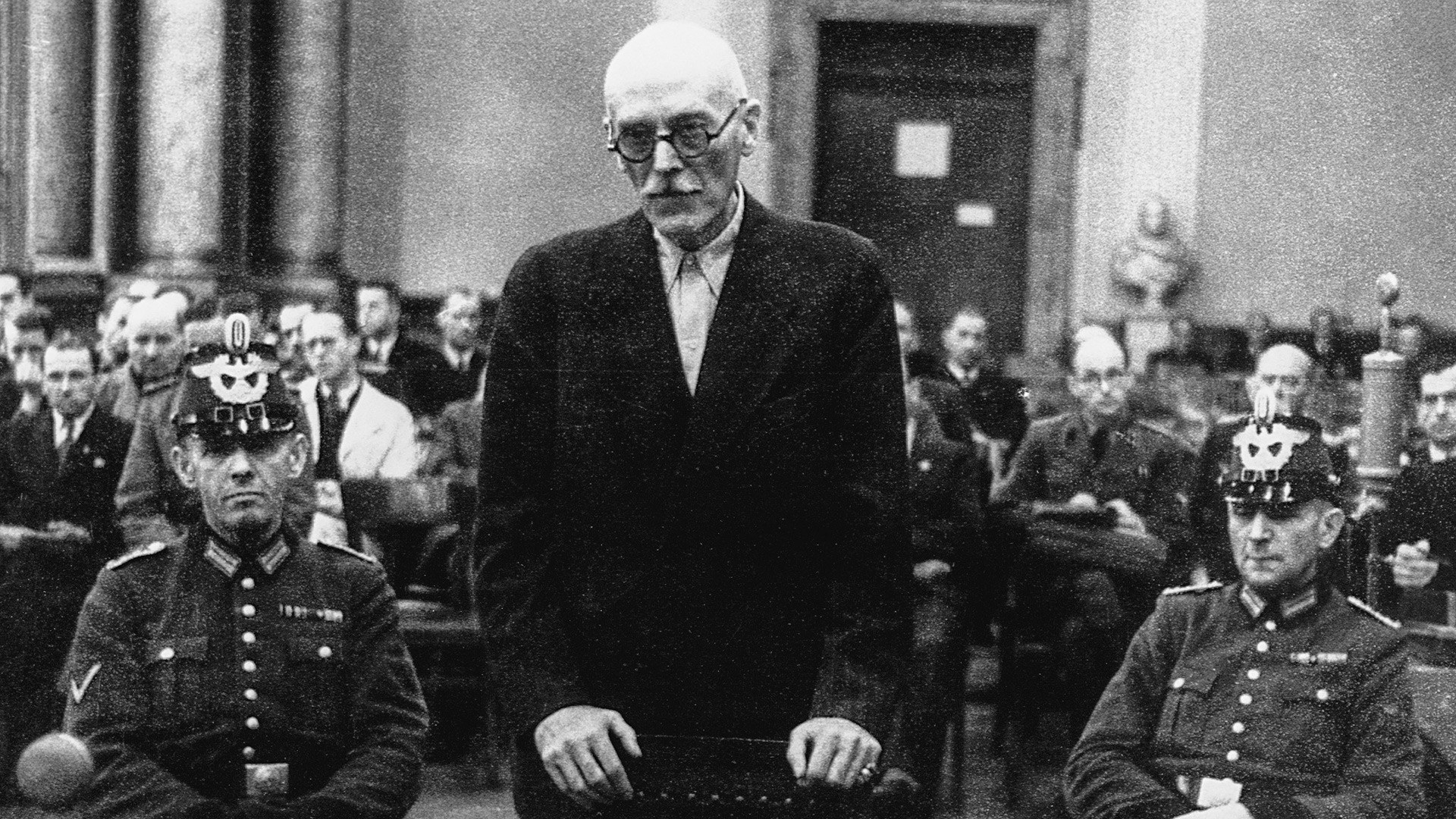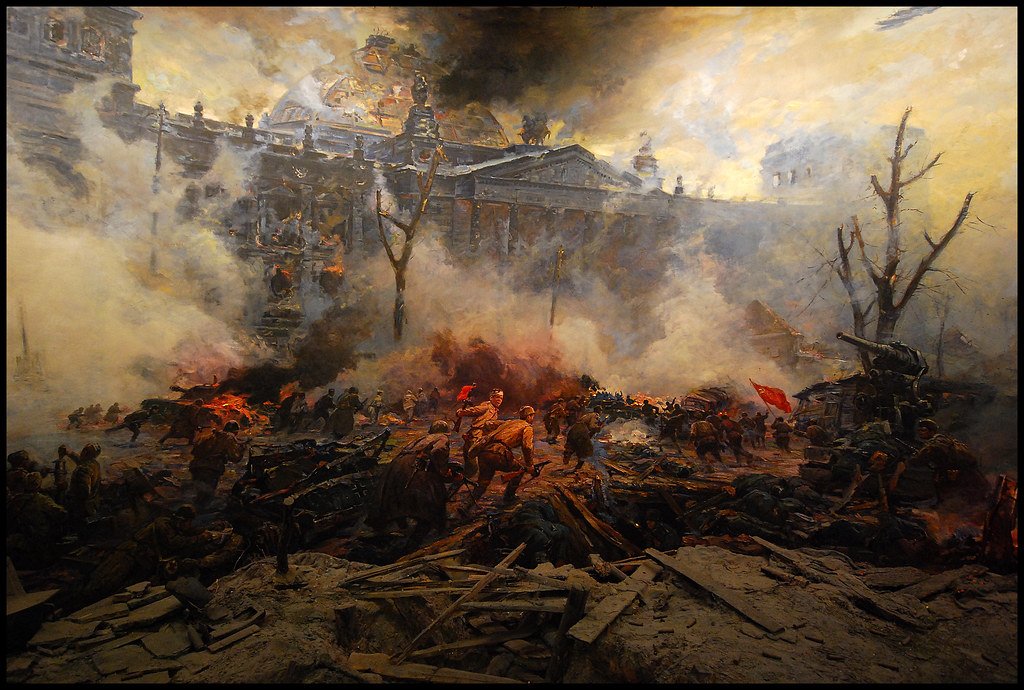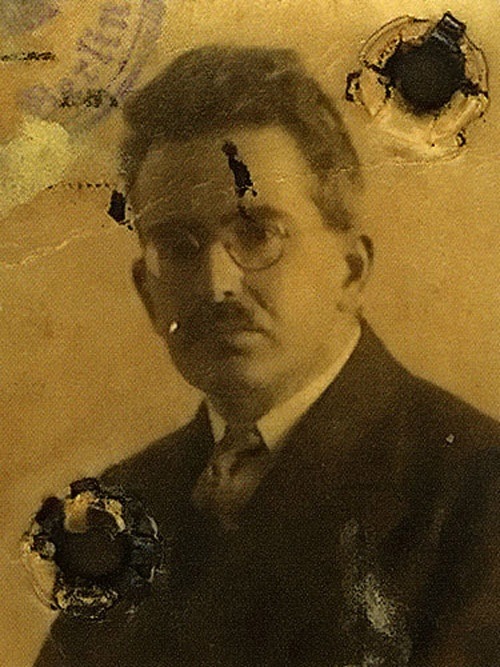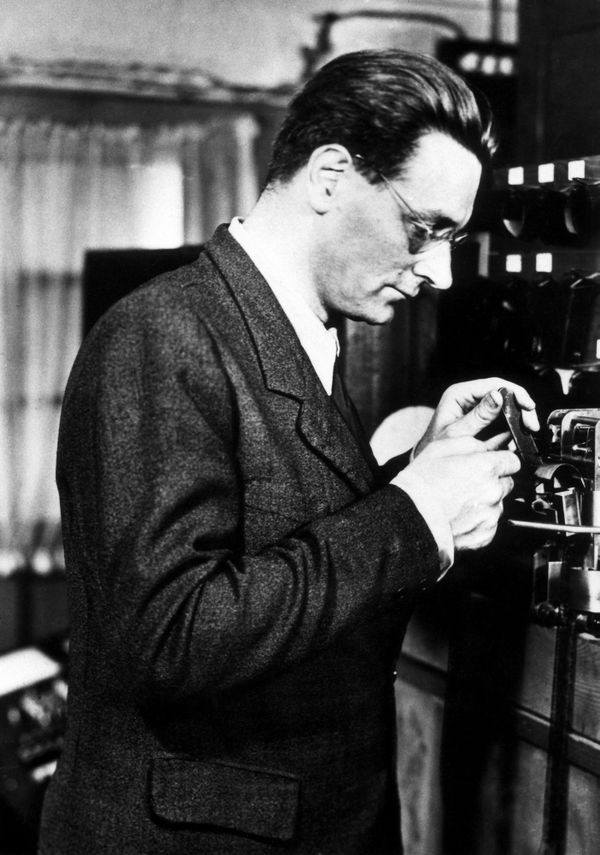Everything about fascism and its opposite has been said for almost a century. Innumerable are the authors of studies, articles, books and documentaries, more or less serious or fanciful, devoted to the history of the fascist phenomenon and its historical significance. Singularly fewer, on the other hand, are interested in the controversies over the meaning of the word, “fascism” and its opposite, “anti-fascism,” and over the proper use of it. The immense merit of American political scientist Paul Gottfried is that he is one of the very few, if not the only one, to deal with all of these aspects. In this lies the interest and the importance of the vast and fascinating synthesis which he has published in Fascisme, histoire d’un concept (2021), a French translation of Fascism, The Career of a Concept (2017) , a study which the author has recently brought to completion with Antifascism. The Course of a Crusade (2021)]. In his Introduction to the French version, American historian Stanley Payne, a great scholar on the subject, aptly writes: “No other book in the recent scholarly literature treats these problems so comprehensively.” To take the measure of this glowing review, a brief perspective is here useful.
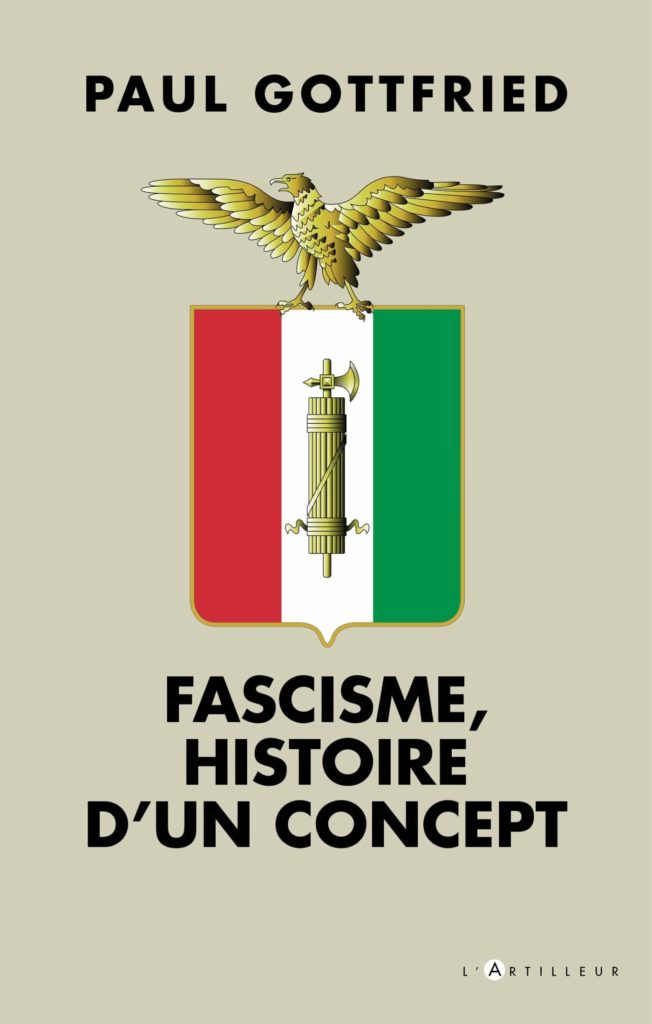
To hear what many politicians, writers and journalists have been telling us for decades, fascism should be a perpetually present, lurking danger, a monster, a hydra which can constantly rise from its ashes, despite all efforts to remove it. In the politico-media vocabulary, the term “fascist” is used constantly to denounce, abuse, denigrate, stigmatize the adversary, whose ideas or person we are supposed to hate. “Fascist” is synonymous with violent, fanatic, intolerant, perverse, macho, homophobic, reactionary, colonialist and racist. Fascism is always assimilated or amalgamated with Nazism; it therefore embodies absolute evil, the figure of the devil, the demon of the Bible in a sort of modernist or updated version. The word fascist has become an “empty signifier,” a truncated, trivialized portmanteau word; but nevertheless, because of its pejorative connotation and negative charge, there is not a single disparaging adjective that can compete with it. No leading or secondary political figure can escape the charge of fascism. Over the years, the most diverse regimes, social categories, cultural and religious communities, political parties and trade unions have all or almost all been denounced as fascists. The most contradictory philosophies and ideas have all, or nearly all, been similarly pilloried.
Fascists are therefore, or would have been, according to modern master-censors, jealous guardians of political correctness: Plato, Aristotle, Alexander the Great, Caesar, Charlemagne, Dante, Isabella the Catholic, Philip II, Hegel, Nietzsche, Roosevelt, Churchill, Franco, Gandhi, Mao, Trotsky, Stalin, Tito, Solzhenitsyn, Erdogan, Netanyahu, Putin, Obama, Trump, Biden, Merkel, Orban, Kim-Jong-un, Xi Jinping. Or, to stick to France alone, Louis XIV, Napoleon, Pétain, de Gaulle, Mitterrand, Chirac, Sarkozy, Macron, Mélenchon, Le Pen, Zemmour, Onfray, Houellebecq and many others. Fascist would be, or would have been, Germany and Italy of course, but also Spain, Portugal, Cuba, the USSR, China, the United States, the former Yugoslavia, France, Chile, South Africa, Turkey, Saudi Arabia, Israel, etc. Fascists would also be businessmen, bourgeois, bobos, workers, Catholics, priests, Jews, anti-Semites, Zionists, Islamophobes, Islamophiles, Islamo-leftists, sovereignists, populists, nationalists, globalists, feminists, chauvinists, homosexuals, pederasts, puritans, “pornocrats,” police officers. And I’ll pass over the rest and the best. Ultimately, we should all be, to varying degrees, hopelessly fascists! Tutti fascisti! Fascists All! That was the caustic title of the short political essay published long ago by Italian film critic, Claudio Quarantotto. Fascism has never been so topical. The great vanquished of the political-military history of the twentieth century, fascism seems to have become the absolute and omnipotent winner of Western political-cultural life at the turn of the twenty-first century.
More seriously or more rigorously, since the “march on Rome” of the Mussolini fascists in 1922 (at least, if one accepts to put aside the recent ideological drifts of American and European universities), academic circles have never ceased to try to formulate explanatory theories of the phenomenon. To this day, and despite the incongruous assertions of Roger Griffin and his followers, the debate remains open because there is no consensus. On the contrary, a whole series of interpretations, for the most part initially advanced in the 1920s and 1930s, occupy the field. Some combine and overlap; others, for the most part, contradict and exclude each other.
According to the tastes and convictions of exegetes, fascism is sometimes perceived as the violent and dictatorial instrument of bourgeois capitalism, the “armed wing of capital,” as the Comintern affirmed, in the year 1923. Sometimes, fascism is seen as the effect of irrational, extremist and violent nihilism, a consequence of the moral crisis and the corruption of morals. Sometimes, fascism is regarded as the deleterious result of capitalism and sexual repression, the outgrowth of an authoritarian and repressive society, with its inevitable neurotic and pathological impulses, as the ideologists of the Frankfurt School claimed in the 1930s.
The list of analyses, interpretations and explanations of the phenomenon does not stop there. About twenty specialists, internationally recognized as such, whose tedious enumeration I will spare the reader, identify other factors or characteristics which they deem more essential. The fascist phenomenon is, according to them, the product of the advent of the masses on the political scene; or, the expression of the exclusive radicalism of the middle classes; or, the response to a situation of distress in the face of a movement of social destruction, producing aversion to chaos among the most homogeneous social actors; or, the contemporary form of Bonapartism, independent of a specific class domination; or, the outlet for homosexuality; or, the product of late and atypical development processes; or, resistance to modernization; or, the prototype of the “developmentalist” and modernizing revolution; or, a form of populist and revolutionary ultra-nationalism; or, again, a “political religion,” the typical manifestation of 20th century totalitarianism, a collectivist and police-system specific to modernity, embodying the triumph of violence and terror, with the archetypal models of the Soviet-Communist and Nazi tyrannies, which have more in common with each other than with any other authoritarian form of government.
Let me stress, for the sake of being more complete, but without being exhaustive, that specialists also oppose the right, left or “right and left” nature of the phenomenon – some see fascism as the product of a revisionism of the left, socialist, statist, secularist, anti-traditional and anti-Christian. Others see it as a right-wing revolution, neither reactionary nor opportunist, based on the myth of renewal and regeneration. Still others see it as a revolutionary movement “neither on the right nor on the left;” or simultaneously on the right and the left, born from the synthesis of “revisionist” socialism, revolutionary syndicalism and a new community nationalism, organic and social.
However, fascism as a sociopolitical model of a general and transnational character (or if one prefers the categorization of “generic fascism”) raises more questions than it answers. How can one define fascism without sinking into interpretation-schematization or the reductionist cliché? Historians respond that defining “fascism” is above all about writing history, with the national characteristics linked to political, economic, social and cultural events of countries under consideration. There is not, according to these historians, a model of “one-size-fits-all fascism,” nor a universally valid definition. But on the other hand, one can note the existence of a basic minimal conception, common to the political movements and regimes which appeared in Europe at the beginning of the last century, in the midst of a cultural, economic and social crisis. A point of view a priori convincing but one which raises many questions.
The imperfect similarities which these historians point out constitute indeed a veritable jumble of ideas, values and principles; and there is of course no agreement on their comparative importance, frequency and significance. According to the convictions of the authors, there should be, at the heart of loose fascism, a mystical conception of life and politics; an irrational and voluntarist or idealistic or even spiritualist way of thinking; a cyclical view of history or a palingenesic view of history; the rejection of Marxist materialism; contempt for individualism, parliamentary democracy and the bourgeoisie, in the name of the organic, structured and hierarchical community; racism, anti-Semitism and hatred of others; the cult of the providential and charismatic leader; the call for a new elite, based on the virtue of example; the aspiration to a more mobile society; the desire to create a new ruling class from the middle classes and the working class; the exaltation of youth; the mobilization and integration of the masses through propaganda and the one party; realistic politics (Realpolitik) opposed to utopian politics (Phantasiepolitik); political-cultural imperialism; the heroic justification for war; the desire to reconcile technical modernity and the triumph of traditional values; the fusion of ideals common to traditionalism, nationalism, elitist liberalism, revolutionary socialism and anarcho-syndicalism; the assertion of the primacy of political sovereignty at the expense of any form of economism; the defense of the private economy but nevertheless the extension of public initiative; finally, and in order not to lengthen this list excessively, the will to transform society and the individual in a direction that has never yet been experienced or realized. In the end, a real intellectual patchwork that leaves one speechless.
In the face of these disagreements, many writers have come to deny that one can define a “generic fascist” phenomenon. Others take a less radical position, but nonetheless express the greatest doubt about its usefulness (see in particular: Gregor, Bracher, Allardyce, Muñoz Alonso, Fernández de la Mora, Arendt and De Felice, to name a few).
In reality, specialists of fascism fail to overcome the obstacle represented by the profound differences that exist between supposedly “fascist” movements or regimes, not only between fascist Italy and National Socialist Germany, but also between these two models and the other “nationalist-socialisms” that appeared in the years 1920-1940. To stick to the “state totalitarianism” of Italian fascism, and the “racial totalitarianism” of German National Socialism (and not to mention the “class totalitarianism” of the anticlerical and anti-religious Soviet-Communists), there is an immeasurable difference in the horror (the thesis of Emilio Gentile on “the Italian way of totalitarianism” has moreover been severely criticized by the disciples of Renzo de Felice). Before coming to power, between 1919 and 1922, the Italian fascists inflicted between 600 and 700 casualties among left and far-left activists, but also suffered roughly the same number of deaths in their own ranks. From 1922 to 1940, the Mussolini regime executed nine people (the majority of them Slovenian terrorists), and seventeen others in 1943 (date of the start of the civil war which claimed 50,000 victims, according to Claudio Pavone).
The number of political prisoners in fascist Italy never exceeded 2000. Italian fascism never had the intention or the possibility of developing a genuinely totalitarian system, based on the control of all state institutions and society, nor a fortiori a concentration camp system like those of National Socialist Germany and the USSR. The number of crimes, murders and executions, committed in the name of the “salvation” of Aryan humanity by National Socialist Germany or of the “happiness” of the proletariat, even of all humanity by the USSR and the other communist countries remains a subject of debate among historians; but in any case it is without comparison with that of the victims of fascist Italy (According to the methods, the criteria and the sources, the estimates vary by twice as much: They are from 8 to 15 million for National Socialist Germany, from 20 to 40 million for the USSR and from 60 to 120 million for all the Communist countries). Thus, with Italian fascism there is a difference, not only of degree but of nature.
All of these questions about the similarities and dissimilarities of the Nazi-German and Fascist-Italian models and many more are asked, examined and judiciously discussed by the author of Fascisme, histoire d’une concept (Fascism, History of a Concept). Free and independent of spirit, Paul Gottfried takes seriously the academic tradition of rigor and probity. In this he honors his profession, when a good number of his peers now wallow in ideology and intolerance. Gottfried is not one of those who claim to have the exclusive right to rational or “scientific” arguments, nor to have a monopoly on legitimate speech. He respects his opponents; presents their theses honestly; discusses their content, and presents his conclusions, always avoiding admonishment. If he accepts the categorization of “generic fascism,” he emphasizes, as other authors have done before him (such as Nolte, Arendt, Sternhell, de Felice, Payne, Del Noce or Gregor, to name but a few) that there are fundamental differences between German National Socialism on the one hand and Italian fascism and other “fascisms” on the other.
More seriously or more rigorously, since the “march on Rome” of the Mussolini fascists in 1922 (at least, if one accepts to put aside the recent ideological drifts of American and European universities), academic circles have never ceased to try to formulate explanatory theories of the phenomenon. To this day, and despite the incongruous assertions of Roger Griffin and his followers, the debate remains open because there is no consensus. On the contrary, a whole series of interpretations, for the most part initially advanced in the 1920s and 1930s, occupy the field. Some combine and overlap; others, for the most part, contradict and exclude each other.
According to the tastes and convictions of exegetes, fascism is sometimes perceived as the violent and dictatorial instrument of bourgeois capitalism, the “armed wing of capital,” as the Comintern affirmed, in the year 1923. Sometimes, fascism is seen as the effect of irrational, extremist and violent nihilism, a consequence of the moral crisis and the corruption of morals. Sometimes, fascism is regarded as the deleterious result of capitalism and sexual repression, the outgrowth of an authoritarian and repressive society, with its inevitable neurotic and pathological impulses, as the ideologists of the Frankfurt School claimed in the 1930s. The array of analyses, interpretations and explanations of the phenomenon does not stop there, however. About twenty specialists, internationally recognized as such, whose tedious enumeration I will spare the reader, identify other factors or characteristics which they deem more essential. The fascist phenomenon is, according to them, the product of the advent of the masses on the political scene; or, the expression of the exclusive radicalism of the middle classes; or, the response to a situation of distress in the face of a movement of social destruction, producing aversion to chaos among the most homogeneous social actors; or, the contemporary form of Bonapartism, independent of a specific class domination; or, the outlet for homosexuality; or, the product of late and atypical development processes; or, resistance to modernization; or, the prototype of the “developmentalist” and modernizing revolution; or, a form of populist and revolutionary ultra-nationalism; or, again, a “political religion,” the typical manifestation of 20th century totalitarianism, a collectivist and police-system specific to modernity, embodying the triumph of violence and terror, with the archetypal models of the Soviet-Communist and Nazi tyrannies, which have more in common with each other than with any other authoritarian form of government.
Let me stress, for the sake of being more complete, but without being exhaustive, that specialists also oppose the right, left or “right and left” nature of the phenomenon – some see fascism as the product of a revisionism of the left, socialist, statist, secularist, anti-traditional and anti-Christian. Others see it as a right-wing revolution, neither reactionary nor opportunist, based on the myth of renewal and regeneration. Still others see it as a revolutionary movement “neither on the right nor on the left;” or simultaneously on the right and the left, born from the synthesis of “revisionist” socialism, revolutionary syndicalism and a new community nationalism, organic and social.
However, fascism as a sociopolitical model of a general and transnational character (or if one prefers the categorization of “generic fascism”) raises more questions than it answers. How can one define fascism without sinking into interpretation-schematization or the reductionist cliché? Historians respond that defining “fascism” is above all about writing history, with the national characteristics linked to political, economic, social and cultural events of countries under consideration. There is not, according to these historians, a model of “one-size-fits-all fascism,” nor a universally valid definition. But on the other hand, one can note the existence of a basic minimal conception, common to the political movements and regimes which appeared in Europe at the beginning of the last century, in the midst of a cultural, economic and social crisis. A point of view a priori convincing, but one which raises many questions.
The imperfect similarities which these historians point out constitute indeed a veritable jumble of ideas, values and principles; and there is of course no agreement on their comparative importance, frequency and significance. According to the convictions of the authors, there should be, at the heart of loose fascism, a mystical conception of life and politics; an irrational and voluntarist or idealistic or even spiritualist way of thinking; a cyclical view of history or a palingenesic view of history; the rejection of Marxist materialism; contempt for individualism, parliamentary democracy and the bourgeoisie, in the name of the organic, structured and hierarchical community; racism, anti-Semitism and hatred of others; the cult of the providential and charismatic leader; the call for a new elite, based on the virtue of example; the aspiration to a more mobile society; the desire to create a new ruling class from the middle classes and the working class; the exaltation of youth; the mobilization and integration of the masses through propaganda and the one party; realistic politics (Realpolitik) opposed to utopian politics (Phantasiepolitik); political-cultural imperialism; the heroic justification for war; the desire to reconcile technical modernity and the triumph of traditional values; the fusion of ideals common to traditionalism, nationalism, elitist liberalism, revolutionary socialism and anarcho-syndicalism; the assertion of the primacy of political sovereignty at the expense of any form of economism; the defense of the private economy but nevertheless the extension of public initiative; finally, and in order not to lengthen this list excessively, the will to transform society and the individual in a direction that has never yet been experienced or realized. In the end, a real intellectual patchwork that leaves one speechless.
In the face of these disagreements, many writers have come to deny that one can define a “generic fascist” phenomenon. Others take a less radical position, but nonetheless express the greatest doubt about its usefulness (see in particular: Gregor, Bracher, Allardyce, Muñoz Alonso, Fernández de la Mora, Arendt and De Felice, to name a few).
In reality, specialists of fascism fail to overcome the obstacle represented by the profound differences that exist between supposedly “fascist” movements or regimes, not only between fascist Italy and National Socialist Germany, but also between these two models and the other “nationalist-socialisms” that appeared in the years 1920-1940. To stick to the “state totalitarianism” of Italian fascism, and the “racial totalitarianism” of German National Socialism (and not to mention the “class totalitarianism” of the anticlerical and anti-religious Soviet-Communists), there is an immeasurable difference in the horror (the thesis of Emilio Gentile on “the Italian way of totalitarianism” has moreover been severely criticized by the disciples of Renzo de Felice). Before coming to power, between 1919 and 1922, the Italian fascists inflicted between 600 and 700 casualties among left and far-left activists, but also suffered roughly the same number of deaths in their own ranks. From 1922 to 1940, the Mussolini regime executed nine people (the majority of them Slovenian terrorists), and seventeen others in 1943 (date of the start of the civil war which claimed 50,000 victims, according to Claudio Pavone).
The number of political prisoners in fascist Italy never exceeded 2000. Italian fascism never had the intention or the possibility of developing a genuinely totalitarian system, based on the control of all state institutions and society, nor a fortiori a concentration camp system like those of National Socialist Germany and the USSR. The number of crimes, murders and executions, committed in the name of the “salvation” of Aryan humanity by National Socialist Germany or of the “happiness” of the proletariat, even of all humanity by the USSR and the other communist countries remains a subject of debate among historians; but in any case it is without comparison with that of the victims of fascist Italy (According to the methods, the criteria and the sources, the estimates vary by twice as much: They are from 8 to 15 million for National Socialist Germany, from 20 to 40 million for the USSR and from 60 to 120 million for all the Communist countries). Thus, with Italian fascism there is a difference, not only of degree but of nature.
All of these questions about the similarities and dissimilarities of the Nazi-German and Fascist-Italian models and many more are asked, examined and judiciously discussed by the author of Fascisme, histoire d’une concept (Fascism, History of a Concept). Free and independent of spirit, Paul Gottfried takes seriously the academic tradition of rigor and probity. In this he honors his profession, when a good number of his peers now wallow in ideology and intolerance. Gottfried is not one of those who claim to have the exclusive right to rational or “scientific” arguments, nor to have a monopoly on legitimate speech. He respects his opponents; presents their theses honestly; discusses their content, and presents his conclusions, always avoiding admonishment. If he accepts the categorization of “generic fascism,” he emphasizes, as other authors have done before him (such as Nolte, Arendt, Sternhell, de Felice, Payne, Del Noce or Gregor, to name but a few) that there are fundamental differences between German National Socialism on the one hand and Italian fascism and other “fascisms” on the other.
That said, Gottfried prefers to reserve the term “fascism” for movements other than Nazism (which was a “borderline case,” marked by the totalizing and exterminating character of its dictatorship, and significantly opposed to any form of organic democracy) – and in the framework of “generic fascism” he distinguishes between and “Latin fascism” of Catholic countries from “North European fascism” of Protestant countries. He also agrees that the fascist phenomenon is revolutionary in nature and historically linked to interwar Europe. Furthermore, he also agrees that the traditional, nationalist and conservative rights of the authoritarian governments of Franco, Salazar or Dollfuss cannot be amalgamated with the only true model of “generic fascism” that is Italian fascism. On the other hand, considering that the dividing line between right and left rests on the principles of egalitarianism and hierarchy and on the acceptance or rejection of the myth of progress, Gottfried resolutely classifies fascism on the right, and opposes thus frontally authors who, like in his Preface to the French translation, Stanley Payne, believe that fascism constitutes, on the contrary, the only type of revolutionism beyond the classic forms of the left and the right.
One can however doubt that the categorization of “Latin fascism,” used by Paul Gottfried, is really of a nature to shed more light on the rather muddled question of “generic fascism.” For my part, I believe I know the life and political thought of José Antonio Primo de Rivera quite well, as well as the entire bibliography of his movement, the Spanish Phalange. The majority of specialists see in José Antonio the model of “Spanish fascism.” Defined as fascist, José Antonio is therefore necessarily anti-democratic, putschist, ultranationalist, imperialist, a warmonger, totalitarian, apologist of violence and dictatorship. The problem is that these opinions, accusations and value judgments are all questionable and easily overturned by the facts, life and writings of José Antonio. Let us pass over the annoyance and the legitimate sarcasm that the severity and the injustice of these judgments do not fail to arouse in Hispanic countries, when such judgments come from foreign authors who make sure to be much more careful, balanced and measured when the time comes to assess the immeasurably greater violence committed in the name of so-called peaceful democracy inside or outside the borders of their own countries.
But let us underline two points, often overlooked by those who approach the study of so-called “Spanish fascism.” It should first be remembered that over the past two centuries, both the Right and the Left have for the most part embraced their own forms of anti-democracy, authoritarianism, nationalism, imperialism, violence, warmongering, elitism, hierarchy, identity politics or particularism. It should then be noted that the José-Antonian Phalangist movement (1933-1936) has only very distant links with the Traditionalist Phalange movement, born of the merger of all the right-wing parties under the aegis of Franco, in 1937, and all the more so with the Caudillo regime from 1937 to 1975.
For the comparison with “Latin fascism,” let us stick here only with the Phalange of José Antonio. In reality, beyond the “revolutionary” or very reformist character of the economic and social program of the Spanish Phalange of the JONS, the elements which differentiate the José-Antonian ideal from fascism(s) are numerous: the conception of the subordinate state to moral principles and to the transcendent end of man, the sense of human dignity, consideration for the individual and social life, respect for freedom, the affirmation of man’s eternal value, and the Catholic inspiration of political philosophy and the structure of society. And this is not nothing. Anti-capitalist and anti-socialist-Marxist, José Antonio undoubtedly was. But was he anti-democratic? It is debatable: “The aspiration for a free and peaceful democratic life will always be the goal of political science beyond all fashions,” he said. Violence was not a postulate of its ideal, nor a condition of its objective, but a pragmatic necessity to avoid being annihilated (the José-Antonian Phalange suffered about fifteen fatal attacks the day after its foundation; after eight months of waiting, it launched into reprisals, leaving some sixty victims among its adversaries, a figure roughly equal to the total of its own losses. But throughout the duration of the Second Spanish Republic and until the outbreak of the Civil War there were nearly 2,500 dead).
José Antonio wanted to be a patriot much more than a nationalist. “We are not nationalists,” he said, “because being a nationalist is nonsense; it is to base the deepest springs of the nation on a physical factor, on a simple physical circumstance. We are not nationalists because nationalism is the individualism of peoples.” We do not find the slightest territorial claim in his Complete Works either. According to him, the Spanish Empire in the 20th century could only be spiritual and cultural in nature. One would look in vain for anti-Semitic or racist overtones in his remarks. No doubt he clumsily used the term totalitarian or totalitarian state five times, but he did so clearly to signify his desire to create a “state for all,” “without divisions,” “integrating all Spaniards,” and “An instrument at the service of national unity.” Equally surprising is his point of view on fascism expressed in his 1936 declaration: “Fascism is fundamentally wrong: it is right in sensing that it is a religious phenomenon, but it wants to replace religion with idolatry;” and “it leads to the absorption of the individual into the collective.” As for his Catholic convictions, they cannot be questioned. We find the ultimate and clear manifestation of this in the will he wrote on November 18, 1936, the day after a parody of a trial, two days before his execution: “I forgive with all my heart all those, without exception, who may have harmed or offended me, and I ask all those to forgive me to whom I may owe the reparation of some wrong, be it great or small.”
One can of course think that there exists between the agnostic Mussolini, the secularist Giovanni Gentile (official philosopher of fascism), the neo-pagan Julius Evola, the Romanian orthodox, very anti-Semitic, Codreanu, and the Catholic, national-syndicalist, José Antonio, a kind of lowest common denominator. But the link that would constitute “Latin fascism” is at the very least tenuous and questionable. The comparison of the young leader of the Phalange with the non-conformists or French personalists of the 1930s, or with the founder of Fianna Fail, President of the Irish Republic, Éamon de Valera, however seems much more convincing. It is telling that, somewhat embarrassed by the José Antonio case, most historians resort to a series of euphemisms. Joséantonian fascism would be, they say, “intellectual,” “rational,” “moderate,” “civilized.” “idealist,” “naïve,” or “poetic”. Perhaps! But these attributes are not among the commonly accepted characteristics of fascism.
With this reservation on “Latin fascism” made, I cannot say enough how much Gottfried’s book deserves to be read. Having appreciated the English version in its time, I was fortunate to be associated with the French edition project. In his beautiful Introduction for the French-speaking public, Stanley Payne writes: “Paul Gottfried’s book is the best and most comprehensive interpretive study of fascism that has emerged in the last decade of this century.” Allow me to correct just a few words to say in a way that I believe is even more precise: “which has been in existence for a quarter of a century.”
Note: A word on the Franco-French polemics around the “French origins” of fascism. According to the thesis developed over more than forty years ago, by the Israeli historian, Zeev Sternhell (who was a Zionist-socialist in his youth and then a social-democratic activist influenced by Habermas), France was the laboratory of proto-fascism and of fascism at the turn of the 19th and 20th centuries. It then had a real “fascist impregnation” in the 1930s, which finally led to the Vichy regime, the perfect realization of fascism. Obsessed with a view of the history of binary ideas pitting the heirs of the Enlightenment against their opponents, Sternhell exaggeratedly magnified the influence of a few political-cultural movements and a handful of famous intellectual figures. Contrary to what he suggests, there is a considerable difference between nationalist and authoritarian movements, which advocate state reform in the sense of strengthening the executive, and a fascist organization which pursues its revolutionary overthrow, or which aspires to a profound upheaval of social structures. Raymond Aron, Michel Winock, Serge Berstein and many other historians and political scientists, have demonstrated the amalgamations and the Manichean character of Sternhell’s work, which, despite very stimulating early intuitions, is more of a form of anti-fascist activism than a rigorous history of ideas.
Arnaud Imatz, a Basque-French political scientist and historian, holds a State Doctorate (DrE) in political science and is a correspondent-member of the Royal Academy of History (Spain), and a former international civil servant at OECD. He is a specialist in the Spanish Civil War, European populism, and the political struggles of the Right and the Left – all subjects on which he has written several books. He has also published numerous articles on the political thought of the founder and theoretician of the Falange, José Antonio Primo de Rivera, as well as the Liberal philosopher, José Ortega y Gasset, and the Catholic traditionalist, Juan Donoso Cortés.
This article appears through the kind courtesy of La Nef. Translated from the French by N. Dass.
The featured image shows a poster for the Repubblica Sociale Italiana (RSI), by Gino Boccasile, ca. 1944.
